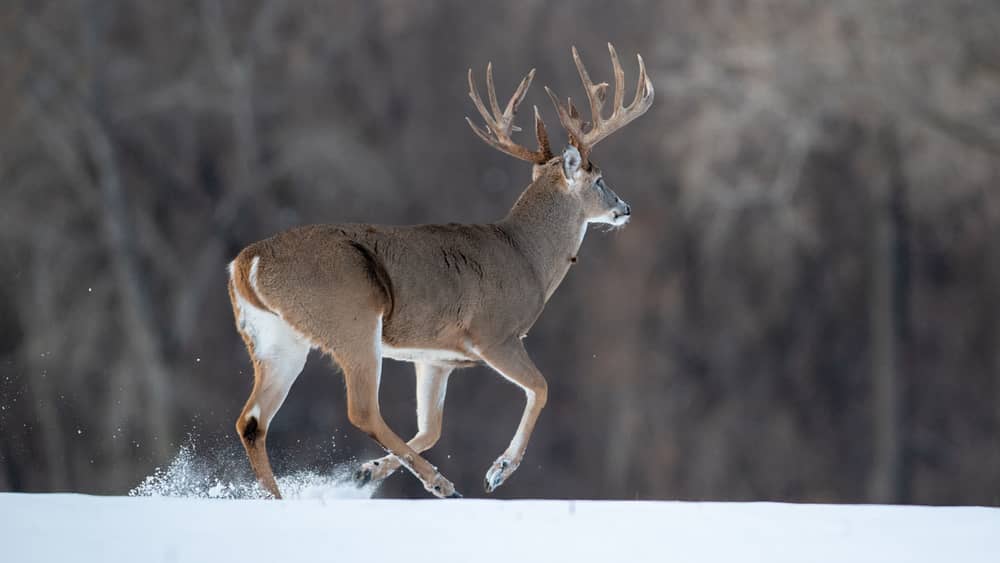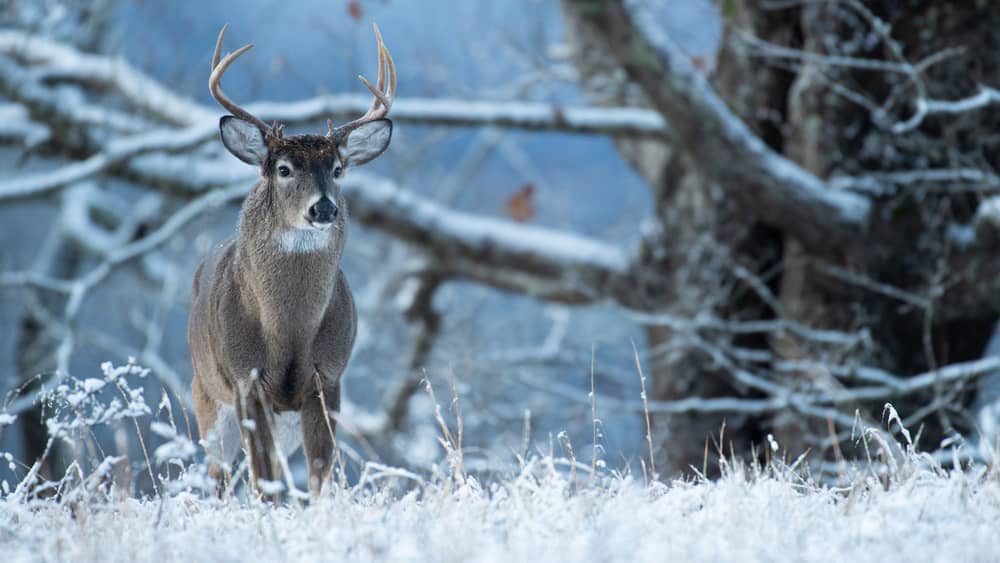Snowfall transforms the environment into a winter wonderland but can also make it harder for animals to live. Snow presents particular difficulties and opportunities for deer. So, do deer move when it’s snowing?
Deer have adapted to live in cold climates, but when the ground is covered with snow, it can be challenging for them to forage for food and move about their environment.
It relies on a number of variables, including the amount of snowfall, how long the storm lasts, and the supply of food. Although deer tend to move less when it’s snowing, they still need to seek for food to survive.
As a result, they frequently alter their behavior and locomotion to accommodate the snowfall. This essay will examine how deer behavior varies when it snows. Also, you must understand how they adjust to their surroundings and how snow affects their survival.
Table of Contents
Do Deer Move When It’s Snowing?

Deer behavior and movement are influenced by a number of things during snowfall. Deer may have trouble moving across their habitat and finding food when it is snowing. It’s a good idea to have a backup plan in case something goes wrong.
They typically modify their foraging patterns as one of their main strategies for adjusting to snowfall. Deer frequently seek out areas with less snow cover in areas with deep snow, such as south-facing slopes or regions close to water sources.
This animal can locate food more readily in these regions because there is a higher likelihood of exposed plants there. When other food sources are low in the winter, deer will also alter their diet and rely more on woody browse and evergreen trees.
Deer often move less than usual during a snowfall. To save energy and stay warm, they may find refuge in protected regions like thickets or under evergreen trees.
Nonetheless, deer will still need to forage, even during a snowstorm, therefore they will often move in short bursts between feeding and resting places.
Deer will adjust their behavior throughout the winter months in addition to changing their movement patterns and foraging routines. Deer often become less active and spend more time in protected locations during the breeding season to conserve energy.
Throughout the winter, they will also band together in small herds to improve their chances of finding food and defend themselves against wolves and other predators.
It’s important to remember that snow can have a big effect on deer populations. Deer may have trouble obtaining enough food to survive the winter in locations with significant snow cover. In addition, snow can make it simpler for wolves or coyotes to track down and capture deer.
How To Hunt Deer When It’s Snowing?
Although it can be a unique and thrilling experience, deer hunting in the snow also comes with a number of difficulties. Here are some pointers for deer hunting in the snow:
Tracking
Deer tracks are easier to find in the snow. Use this opportunity by searching for new tracks in locations where you know deer are likely to be present. While hunting in a new location, scout ahead of time to find potential deer-traveling regions.
Be Quiet
Remain quiet since deer can hear you coming more easily while it is snowing. Be extremely cautious when moving to prevent breaking twigs or rustling leaves. To lessen noise, think about donning snowshoes or pulling a sled.
Camouflage
Snow can help you see deer more easily, but it also makes it easier for them to see you. To avoid being seen against the snow and to hide your existence, seek out natural cover such as trees or rocks.
Keep Patient
Be patient because deer frequently rest in protected areas during snowstorms to conserve energy. Deer will migrate between feeding and resting spots, so be patient and wait. Think about putting up in a field or open forest where there is adequate visibility.
Adapt To Deer Behavior
As previously noted, during the winter, deer behavior varies. They often change their feeding patterns and look for places with less snow cover.
Properly Dress
Dress warmly because chilly weather and snow can make hunting uncomfortable. So let’s wear layers of clothing and the proper equipment to be warm and dry. For weather protection, think about donning insulated and waterproof gear.
Protect Yourself
Hunting in a snowfall can be hazardous, so take additional care to keep yourself safe. Always let someone know where you’ll be hunting and when you expect to return, and stay away from locations with strong winds or plenty of snowfall.
Deer hunting in the snow can be a fun activity, but it takes proper planning and preparation. You may improve your chances of success while remaining secure and at ease by paying attention to these suggestions.
Hunt When It’s Snowing Or After It Snows?

Many factors can make deer hunting better in the snow, but ultimately the situation and the hunter’s choices will determine this. The following are some potential benefits and drawbacks of deer hunting in the snow.
Benefits
New snow makes it simpler to follow deer and ascertain their whereabouts. This can be particularly useful for hunters who are proficient track readers.
Deer can be more easily seen in snow because their dark coats shine out against the snow’s white background. This may be advantageous for hunters that favor still-hunting or distant hunting.
Additionally, in order to preserve energy and obtain food during the winter, deer change their behavior. They may have more consistent foraging and mobility patterns, which makes it simpler for hunters to forecast their behavior.
Drawbacks
Heavy snow can make moving through the woods more tough, especially for hunters who are inexperienced with snowy circumstances.
Snow can make deer more visible, which can make it easier for hunters to locate them, but it can also make hunters more visible to deer. Hunters must be very cautious to remain undetected and prevent becoming silhouetted against the white background.
Hunting in the snow can be chilly and uncomfortable. It can be harder, especially if the hunter is not fully outfitted with the right equipment.
Finally, deer hunting in snow may or may not be preferable depending on the situation and personal preferences of the hunter. Snowy weather may provide some hunters new problems as well as more possibilities to follow wildlife. Others might favor hunting in more comfortable conditions on less difficult terrain.
Frequently Asked Questions
What do deer do in the snow?
Deer will often seek out food in regions where there is less snow cover when it is snowing. Along with changing their movements to save energy, they bunker down in bad weather. They travel, in particular, during storm lulls in search of food and water.
When it snows, where do deer go?
Deer normally travel, bed, and feed in their usual locations in light snow. They’ll probably seek shelter under conifers or other dense vegetation with overhead protection when it’s snowing heavily. They frequently relocate to the lee slopes of hills and ridges in the presence of snow and wind. Nevertheless, big-wood deer may make brief migrations to conventional yarding regions with heavy snowfall, typically in low-lying, dense coniferous forests.
What is the best way to hunt deer in the snow?
Deer may be tracked by their footsteps, which is one of the greatest ways to hunt them in the snow. You should also employ cover to remain hidden while hunting during the day. Keep in mind to hunt close to sources of food and to be patient and persistent.
Final Thoughts
Do deer move when it’s snowing? Yes, when it snows, deer do move, but the snow and other environmental elements can influence how they move and behave. Hunting enthusiasts and wildlife enthusiasts can track deer more successfully by being aware of how they act in the snow. Each hunter interested in having a unique and gratifying experience can take advantage of the icy setting, regardless of experience level.

